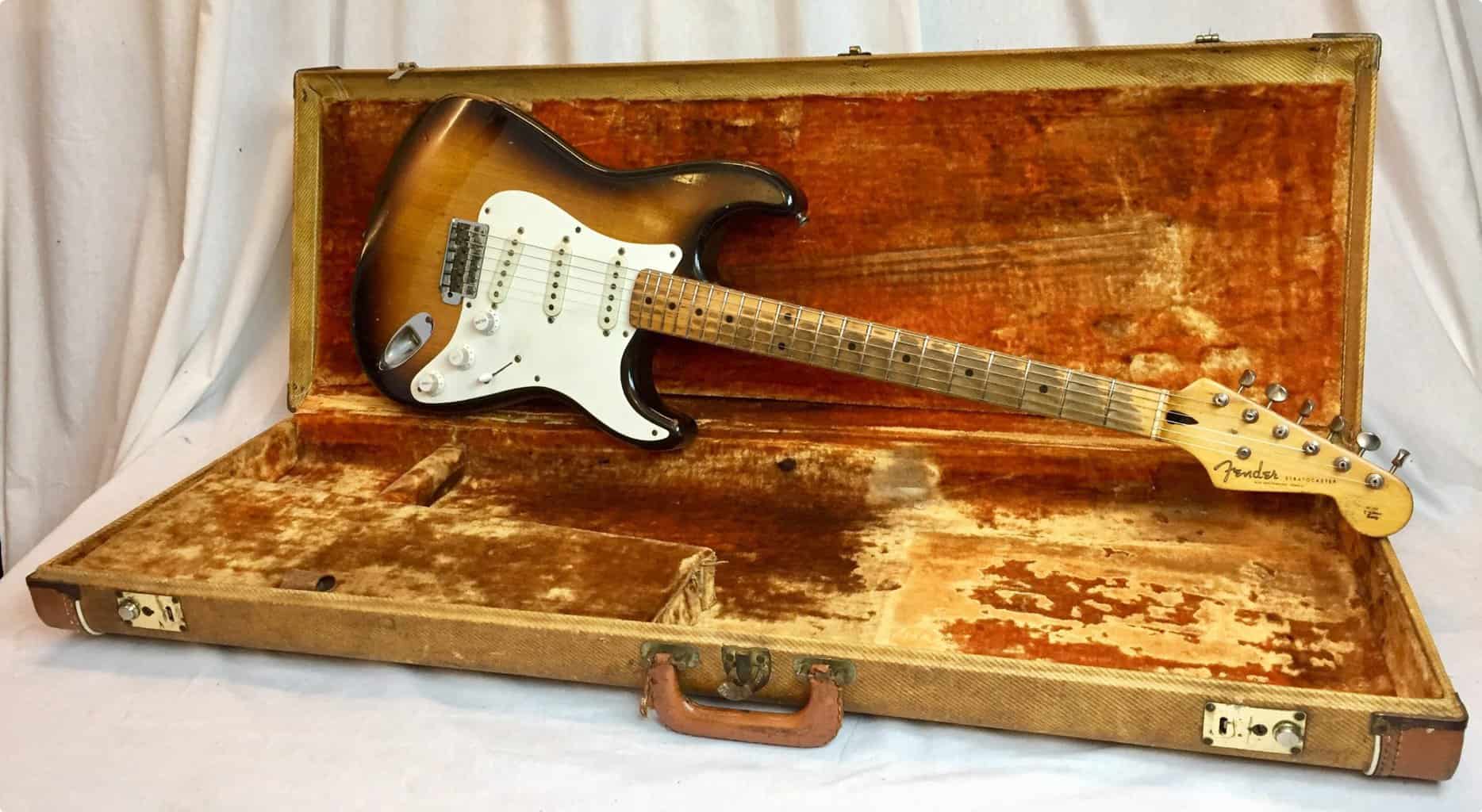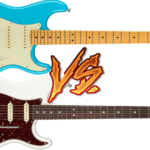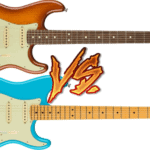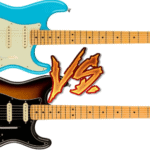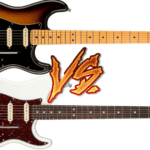The Fender Stratocaster is maybe the most iconic electric guitar ever created.
Its history dates back to 1954 when Leo Fender was the first to build an electric guitar featuring 3 pickups, a spring tension vibrato system, and a contoured body.
Many things have changed since then, except for the soul and iconic presence of this instrument.
However, these changes were not sudden but implemented through the years. This left the players with referential configurations of the guitar as for what was available during certain production periods.
Undoublty, these periods were later identified as specific years, with the most evocative being ’54, ’57, ’59, ’62, ’65 & ‘69.
These years marked important eras in the development and the instrument. Although you should take the small details with a grain of salt since the production was obviously as standardized as it is nowadays and there was a big variance between units.
In this article, we will not delve into the specific measures or specs of any model down to the detail. Instead, we will point out the big-picture changes that defined the history of the model.
If you’re in a hurry, here’s a summary of this article:
The Stratocaster was introduced in 1954 with an ash body and a U-shaped neck. In ’57 the neck changed to a V-shape and the body to alder. In ’59 Brazillian rosewood fretboards were brought in. In ’62 the fretboard became thinner. In ’65 CBS made headstocks bigger. In ’69 Indian rosewood fretboards were the norm.
Main characteristics of the ‘54 Stratocaster
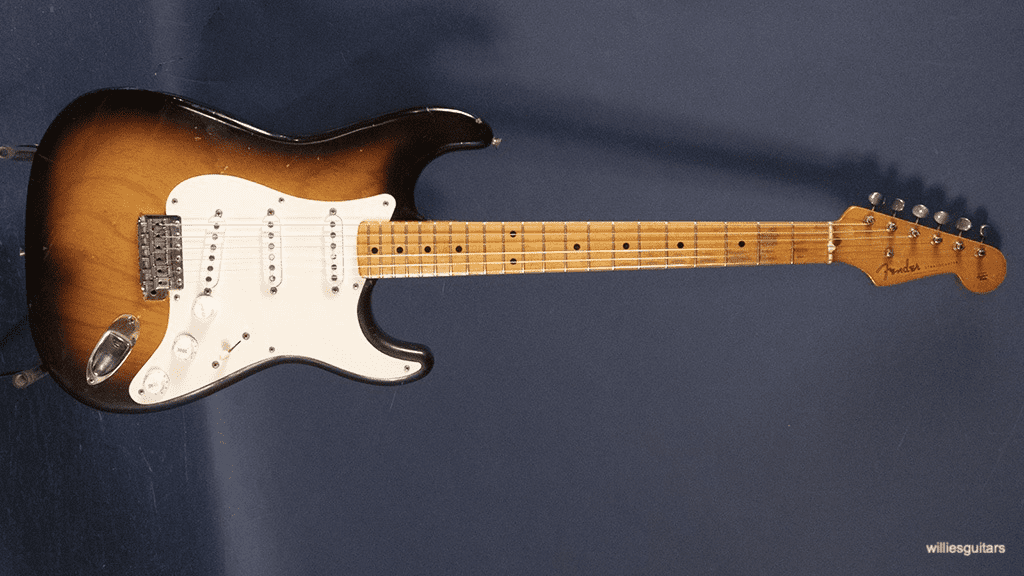
In 19954 Leo Fender developed the first Stratocaster production model. As we said earlier, it was the first electric guitar with a 3 pickup configuration and a spring-mounted tremolo system.
Also, as though it might sound like a ubiquitous feature today, it was the first guitar to implement a contoured body that really improved playing ergonomics.
This first iteration of the guitar sported an ash body, with a 21-fret one-piece maple neck. The tuners were Kluson brand, and the inlays black.
The neck was U-shaped and very thick which is one of the main features of this model.
In a very “Fordian” fashion, this instrument was only available in one finish: two-tone sunburst.
Main characteristics of the ‘57 Stratocaster
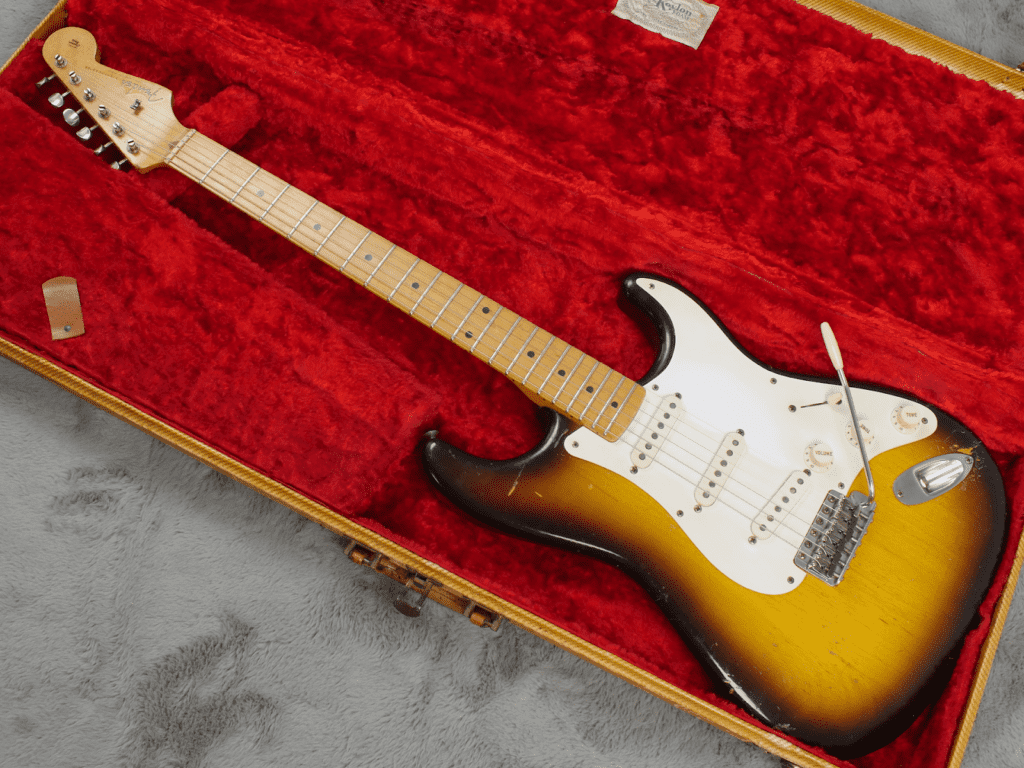
By the year 1957, the production quality was improved greatly. The build was better finished and the weight reduced, making it a more accessible tool for the players.
The neck, although still made from maple, shifted to a V-shape that’s still nowadays a fan favorite.
The main difference in this model is that the body was then made of alder, one of today’s iconic woods for building strats.
Even though all the sunburst finished bodies of this period were built with alder, ash was still used for the blond versions of the instrument.
The ‘57 Stratocaster quickly became one of the classics. This was unquestionably one of its peaks and one of its more iconic configurations.
Main characteristics of the ‘59 Stratocaster
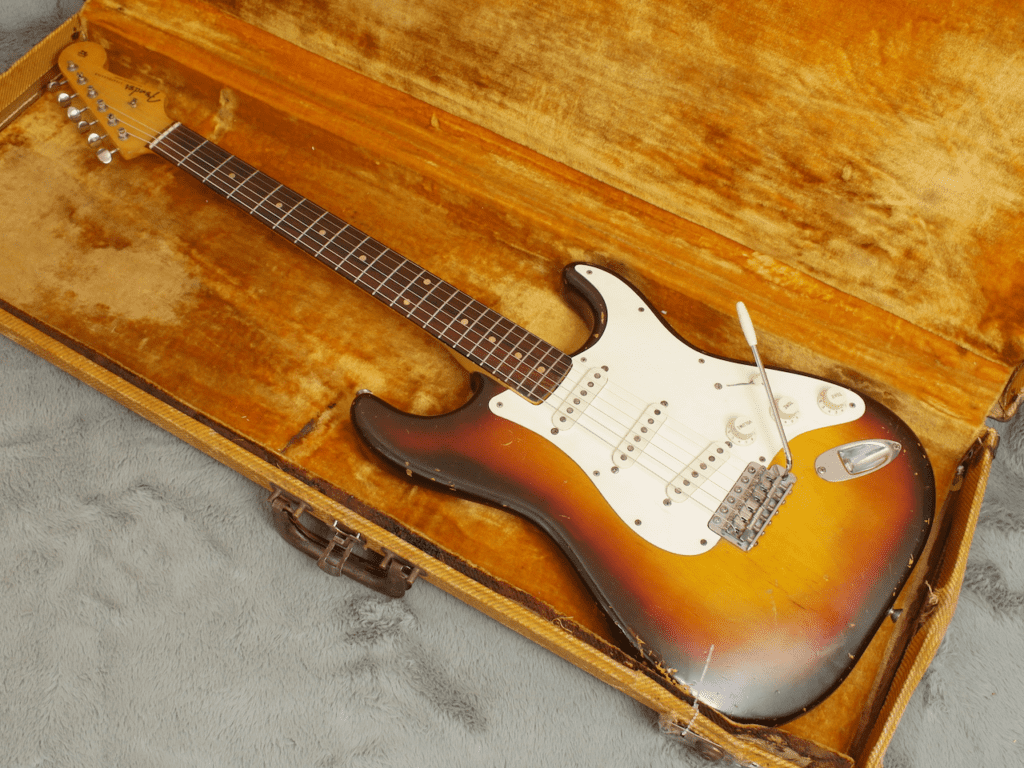
For the ‘59 iteration, things changed again, but not deeply as we said before. All the changes were gradual and actually took years to come to fruition.
In this case, it was the neck shape again, and the fretboard.
The neck rolled back to a U-shape, but this time in a thinner profile, complying with the player’s preferences.
As for the fretboard, this year Fender established one of the most polarizing and sought after for many, configurations: The Brazilian rosewood fretboard.
This fretboard was first instituted as a thick board over the maple neck, colloquially called “slab-board”. From this point in time and until 1970, the maple fretboard would not be available for the Stratocaster. At least in massive production.
The two-color sunburst finish had now evolved to a three-color sunburst.
Main characteristics of the ‘62 Stratocaster
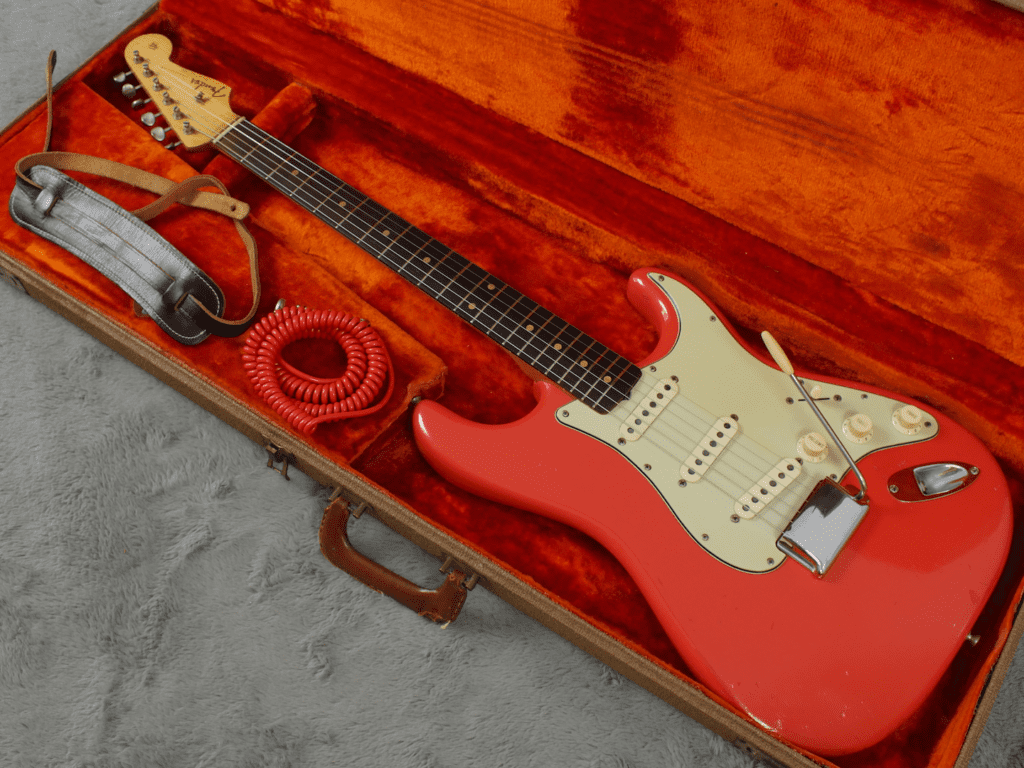
The ‘62 Stratocaster brought in a new small batch of changes. As for the extent of this analysis, we will point out what we consider the 3 most representative.
First, the neck shape changed yet again to a C-shape. This iteration would be the basis for the modern strat neck.
Second, the Brazilian rosewood fretboard was made slimmer to a form now called “veneer-board”.
Third, the instrument became colorful.
Really, from 1960 Fender started working with a standardized palette of finish colors, many of which were used in the automotive industry. They were supplied by DuPont and available at an additional 5% cost to the instrument.
Main characteristics of the ‘65 Stratocaster
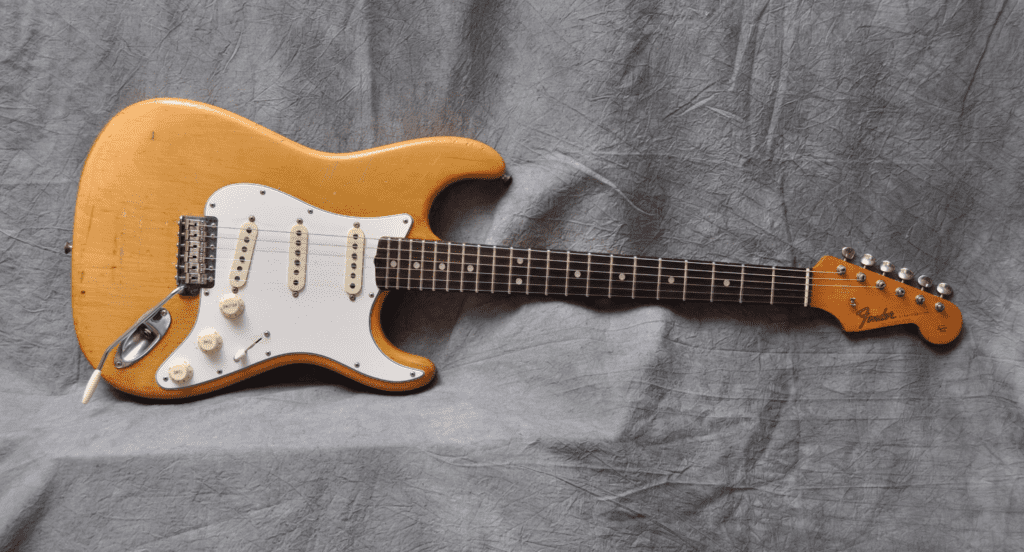
In 1965 the Fender company was bought by CBS (Columbia Broadcasting Systems). This new controller company had some changes in mind for the instrument.
The now-called CBS era is seen with some reticence from many of the brand’s fans since it introduced some polarizing and not tone-defining changes.
This “dark age” is evident when you check out the price tags of the vintage guitars produced before CBS’s takeover which are today worth thousands and thousands of dollars.
One of the most noticeable changes in this stretch is beyond a doubt the oversized headstock. The design came with the idea that it would provide bigger real estate to place the company’s logo and model name, and so it did.
This was important for the new owners because they wanted the brand to be better recognized when artists used their guitars on tv appearances.
As for some other modifications, this era brought to the Stratocaster, many historians summarize them as an overall reduction in the instrument quality. The woods were now not as thoroughly sourced, and the rest of the finishes not as precise as before.
It’s important to notice that this degradation in the product was more noticeable in the coming years and not as heavy in the beginning.
Main characteristics of the ‘69 Stratocaster

At last but not least, in 1969, still in the “CBS era” the strat suffered a few other modifications.
The classic Kluson tuners were replaced for the “F” tuners, and the U-shaped neck came back for more.
As for the fretboard, the Brazilian rosewood “veneer-slab” was now replaced for Indian rosewood or an optional laminated “maple cap”.
These changes were not fundamental, but they clearly shaped the fate of the instrument until the current days, so they were worth mentioning.
The ‘54, ‘57, ‘59, ‘62, ‘65 & ‘69 Stratocasters compared
Until now we laid out a brief summary of the main features of every one of these models. For many, the most iconic for Fender Stratocasters.
Now, we would like to put all of the different models through time side to side with their respective specs so you can have a quick reference for the changes over the years.
As you WILL notice, we left over a lot of defining features for these guitars in this analysis such as the pickup variations.
This data is hard to obtain and it will surely be inconsistent from one guitar to another, even if they were made the same year. The production was not as industrialized as it now is, and it left a big room for variance.
The following table shows the changes we pointed out before at a high level. For specific measures or detailed specs, we encourage you to do your own research and improve on ours.
Here’s the final shootout for the ‘54 strat vs. ‘57 vs. ‘59 vs. ‘62 vs. ‘65 vs. ‘69
| Specs | ‘54 | ‘57 | ‘59 | ‘62 | ‘65 | ‘69 |
| Body | Ash | Alder | Alder | Alder | Alder | Alder |
| Neck | Maple neck | Maple neck | Maple neck | Maple neck | Maple neck | Maple neck |
| Neck shape | U-shape | V-shape | Thin U-shape | C-shape | C-shape | U-shape |
| Fretboard | One-piece maple neck | One-piece maple neck | Thick Brazilian rosewood(“slab-board”) | Thin Brazilian rosewood(“veneer-board”) | Thin Brazilian rosewood(“veneer-board”) | Indian rosewood or laminated “maple cap” |
| Wood and construction quality | Standard | Standard | Standard | Standard | Lesser quality | Lesser quality |
| Headstock | Small | Small | Small | Small | Large | Large |
| Tuners | Kluson | Kluson | Kluson | Kluson | Kluson | Fender “F” tuners |
| Finishes | Two-color Sunburst | Two-color sunburst, blonde with ash body | Three-color sunburst | DuPont automobile lacquer colors | DuPont automobile lacquer colors | DuPont automobile lacquer colors |
What is the best Stratocaster reissue model for you?
Over the years Fender has launched a lot of reissues from their most iconic production years.
If you’re looking to get a new strat we highly recommend you try the different alternatives in a store if that’s possible to you. It is essential that you define what features are the ones you most value and then work for there.
Even though, if you would like to hear what we think about these models here are our recommendations:
- If you prefer thicker neck profiles, go for a ‘54 strat
- If you like maple fretboards choose between a ‘54 or a ‘57
- If you are a rosewood enthusiast you can never go wrong with a ‘59 or ‘62
- If you are worried about the construction quality of ‘65s and upwards, remember that reissues are built in the custom shop nowadays where the standards are at their highest

Hello there, my name is Ramiro and I’ve been playing guitar for almost 20 years. I’m obsessed with everything gear-related and I thought it might be worth sharing it. From guitars, pedals, amps, and synths to studio gear and production tips, I hope you find what I post here useful, and I’ll try my best to keep it entertaining also.

